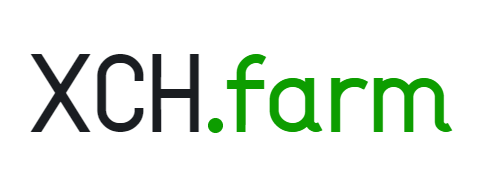Chia Compressed Plots
Compressed plots have emerged as an innovative solution for Chia farmers looking to optimize their storage space and maximize farming efficiency. This guide will provide an overview of compressed plots, the advantages and disadvantages, and tips to help you get started with compressed plotting for Chia farming.
Note that Gigahorse compressed plots can be created with either a CPU or GPU, and Bladebit compressed plots can be created with a GPU. You can plot with a CPU and farm with a GPU or plot with a GPU and farm with a CPU, or any other combination that makes sense for your hardware.
Gigahorse v2.5 plots are generated from Gigahorse 2.0 software. Although they have higher C-levels names that Gigahorse v2.4 plots, they cannot be directly compared since they use a different plot format that allows for more compression. Hence comparisons between C levels in Gigahorse should be within C1-C9 and C11-C20 groups separately. Likewise with Gigahorse v3.0.
Bladebit
| C Level | Size (GiB) | Relative Size | Reward Increase |
|---|---|---|---|
| C1 | 87.5 | 86.3% | 15.9% |
| C2 | 86.0 | 84.8% | 17.9% |
| C3 | 84.5 | 83.3% | 20.0% |
| C4 | 82.9 | 81.8% | 22.3% |
| C5 | 81.3 | 80.2% | 24.7% |
| C6 | 79.6 | 78.5% | 27.4% |
| C7 | 78.0 | 76.9% | 29.8% |
| C8 | - | - | - |
| C9 | 75.2 | 74.2% | 34.8% |
Gigahorse 1.0
| C Level | Size (GiB) | Relative Size | Reward Increase |
|---|---|---|---|
| C1 | 84.2 | 83.0% | 20.4% |
| C2 | 82.6 | 81.5% | 22.8% |
| C3 | 81.0 | 79.9% | 25.2% |
| C4 | 79.4 | 78.3% | 27.7% |
| C5 | 77.8 | 76.7% | 30.3% |
| C6 | 76.2 | 75.1% | 33.1% |
| C7 | 74.6 | 73.6% | 35.9% |
| C8 | 71.3 | 70.3% | 42.2% |
| C9 | 68.1 | 67.2% | 48.9% |
| C10 | - | - | - |
NoSSD 1.0
| C Level | Size (GiB) | Relative Size | Reward Increase |
|---|---|---|---|
| C1 | 84.5 | 83.3% | 20.0% |
| C2 | 82.9 | 81.8% | 22.3% |
| C3 | 81.3 | 80.2% | 24.7% |
| C4 | 79.7 | 78.6% | 27.2% |
| C5 | 78.1 | 77.0% | 29.8% |
Gigahorse 2.0/3.0
| C Level | Size (GiB) | Relative Size | Reward Increase |
|---|---|---|---|
| C11 | 85.7 | 84.5% | 18.3% |
| C12 | 82.5 | 81.4% | 22.9% |
| C13 | 78.9 | 77.8% | 28.5% |
| C14 | 74.7 | 73.7% | 35.7% |
| C15 | 71.6 | 70.6% | 41.6% |
| C16 | 64.8 | 63.9% | 56.5% |
| C17 | 63.0 | 62.1% | 61.0% |
| C18 | 59.7 | 58.9% | 69.8% |
| C19 | 56.4 | 55.6% | 79.8% |
| C20 | 53.1 | 52.4% | 91.0% |
| C29 | 48.0 | 47.3% | 111.3% |
| C30 | 43.3 | 42.7% | 134.2% |
| C31 | 38.6 | 38.1% | 162.7% |
| C32 | 33.9 | 33.4% | 199.1% |
| C33 | 29.1 | 28.7% | 248.5% |
NoSSD 2.0/3.0
| C Level | Size (GiB) | Relative Size | Reward Increase |
|---|---|---|---|
| C10 | 70.8 | 69.8% | 43.2% |
| C11 | 64.9 | 64.0% | 56.2% |
| C12 | 60.8 | 60.0% | 66.8% |
| C13 | 57.3 | 56.5% | 77.0% |
| C14 | 53.8 | 53.1% | 88.5% |
| C15 | 50.3 | 49.6% | 101.6% |
| C30 | 47.51 | 46.9% | 113.4% |
| C31 | 44.93 | 44.3% | 125.7% |
| C32 | 42.3 | 41.7% | 139.7% |
| C33 | 39.65 | 39.1% | 155.7% |
| C34 | 36.96 | 36.4% | 174.4% |
| C35 | 34.36 | 33.9% | 195.1% |
| C36 | 31.71 | 31.3% | 219.8% |
| C37* | 28.96 | 28.6% | 250.1% |
| C38* | 26.16 | 25.8% | 287.6% |
DrPlotter
| C Level | Size (GiB) | Relative Size | Reward Increase |
|---|---|---|---|
| Eco3x* | 31.9 | 31.5% | 217% |
| Pro4x* | 22.8 | 22.5% | 342% |
Not actually compression!
Although the terms "compression" and "decompression" are used, it's not actually compression in the traditional sense! Compressed plots are partially created plots where the remainder of the plot is generated on-demand during the "decompression" phase. A more accurate term to describe them would be truncated plots or partial plots. This also means higher compression levels are actually faster to plot!
Not quite beyond Hellman
The workload required to "decompress" a plot grows exponentially with compression level and will quickly make it economically inefficient to go beyond the higher compression levels. This means compressed farming won't just devolve into Proof-of-Work. Taken to the extreme, an entire plot created on-demand is known as the well-documented replotting or grinding attack.

